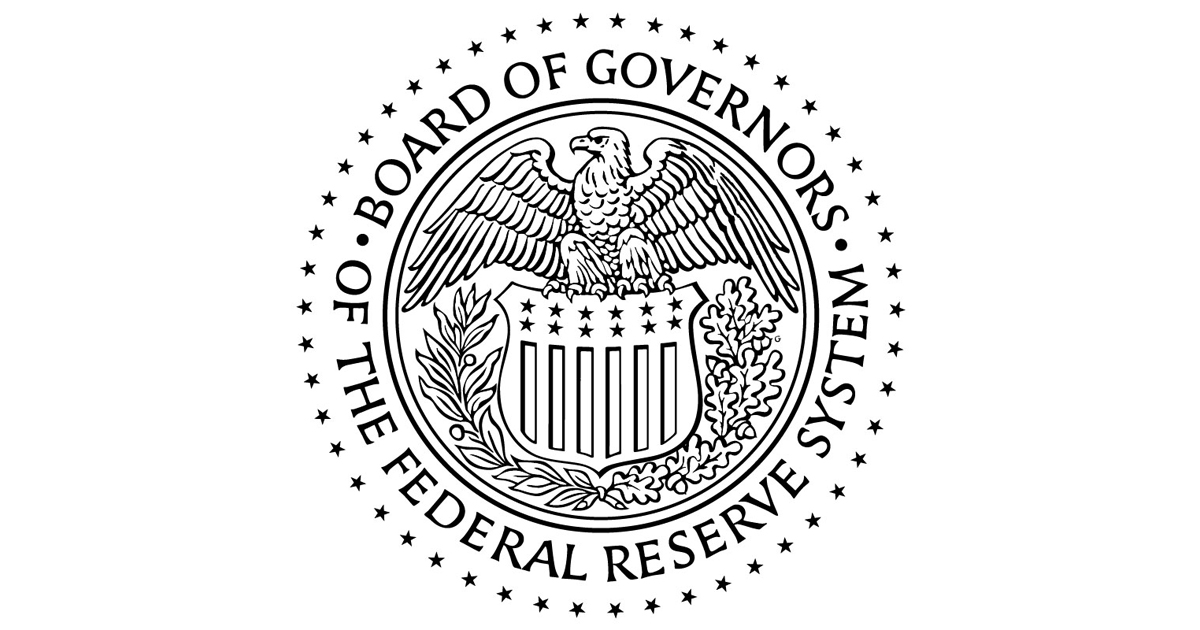Thank you for the opportunity to speak to you today.1
The Federal Reserve is actively revising its banking regulations, a project that I strongly support. For many years, financial regulation mostly moved in one direction, increasingly restricting the banking sector. Because the interactions of regulation with financial markets, the economy, and monetary policy implementation are too often unappreciated, this led to adverse consequences and lots of head scratching as to their causes. In some respects, regulations enacted to shore up financial stability have constrained the Fed’s control over some elements of monetary policy transmission and the size of the balance sheet. Regulatory dominance of the balance sheet must be considered and accounted for to ensure the Federal Open Market Committee (FOMC), through its statutory mandate, has autonomy over conducting monetary policy.
My goal in today’s remarks is to share the core principles that will help guide my decision making in this area, including how regulation affects the Fed’s balance sheet as well as current efforts to reform bank leverage requirements. While discussions about bank reserve balances and interest paid on reserves, the composition of the balance sheet, and Treasury market intermediation are flourishing, I believe that many of these conversations are downstream of the bank regulatory framework. Once we properly tailor the regulatory environment, we can then address questions that are more pertinent to monetary policy implementation.
Before delving into specifics, let me describe five guiding principles. First, I believe that policymakers should always consider the potential costs and benefits of any regulation that crosses their desks. Far too often, adverse spillovers are recognized only after the fact, and the answer to a poorly functioning regulation is the Band-Aid approach of layering on another regulation. Banking regulation typically involves tradeoffs between ensuring smooth market functioning and credit availability during typical conditions and limiting the frequency or magnitude of stressful episodes.
Mapping how second-order impacts are expected to flow through the financial system and economy can help shape regulatory frameworks that are sensible and durable. For instance, the costs and benefits of a regulation on a community bank are rarely comparable to those of the same regulation on a systemically important bank, but heavily impact the credit available to Main Street businesses where local knowledge is critical. Our regulatory framework should take that into account and allow community banks to remain the engines of their local economies, and I would support proposals to grant additional relief aimed at community banks.
A second principle is that policymakers should resist the urge to overreact in the wake of crisis. Broadly speaking, I believe regulators went too far after the 2008 financial crisis, creating many rules that raised the cost of credit and limited its availability without reducing risk in a compensatory fashion. The signs of this overreach are clear: Many traditional banking activities have migrated away from the regulated banking sector partly because burdensome rules have made provision of these services too costly or otherwise difficult for banks to provide. While I have no bias against nonbank financial companies, credit allocation should be driven by market forces, not regulatory arbitrage.
Third, the Federal Reserve should aim for the smallest footprint it can manage. This means limiting distortions to the provision of credit in the economy—for instance, through large-scale asset purchases. It also means sticking to our clear statutory mandate and not coloring outside the lines, and we have recently taken steps in these directions. For example, the FOMC recently announced that maturing agency mortgage-backed securities will be replaced with Treasury bills in the Fed’s portfolio, and the Board voted to rescind the Fed’s climate guidance. Maintaining a focus on our congressional mandates is essential to ensuring the Fed remains a credible independent organization. There is more work to be done in reorienting the Fed’s activities to properly heed our narrow statutory mandate.
Fourth, transparency has many benefits. Banks are one of the most heavily regulated sectors in the economy, and regulators owe the public an accounting for our actions. Transparency is also pragmatic, because it means that banks will understand what we expect of them. Without transparency, effective congressional oversight is impossible. For this reason, I was pleased to vote in favor of the Board’s recent issuance of its stress testing framework for public comment.
Last is a principle that I try to consider in most of my work, which is to keep an open mind. Good new ideas can come from any direction; the regulatory process guarantees that the public can provide input, but regulators listen to different degrees. I will be listening.
Connecting these principles to the work I am doing as a Governor: After two and a half years of shrinking our balance sheet, the FOMC has decided to end those reductions beginning December 1, as the Committee gauged reserve balances to be somewhat around or above ample.
But what determines whether reserves are ample or not? Before the Global Financial Crisis, reserve levels were much lower, or scarce. Even some months ago, reserves were higher, or abundant. Empirically, we can use movements in money markets to assess when conditions are shifting from one regime to another; but, to me, this ignores first principles. Liquidity requirements force banks to hold high-quality liquid assets, including reserves. Meanwhile, capital requirements, such as the enhanced supplementary leverage ratio (eSLR) and global systemically important bank surcharge, impose costs to hold those assets. When these banks, many of which are primary dealers of U.S. Treasury securities, attempt to get that new government debt from auctions to investors, they navigate a regulatory patchwork of contradictory incentives.
Supervisory policy can also boost demand for reserves. In a 2022 podcast, former Fed Vice Chairman for Supervision Randy Quarles describes how supervisory preferences for reserves over other types of liquid assets, as well as fear of heightened scrutiny or supervisory action, can raise demand for bank reserves above and beyond what’s required.2
For all the talk about fiscal dominance of monetary policy, the reality is that the size of the balance sheet is a result of regulatory dominance. Regulations boost demand for reserves, which in turn requires us to end runoff or purchase securities for reserve management purposes. These actions may affect financial conditions and create cross currents with monetary policy goals. The Fed no longer targets monetary aggregates like reserve levels, but that doesn’t mean we should not think about them.
A consequence of the Fed’s large balance sheet is significant payments of interest to the banking sector. Now, this is little different for banks’ income than if they held Treasurys directly, as would occur in a scarce-reserves regime. In fact, an upward-sloping yield curve would suggest banks would earn more from holding Treasurys rather than reserves.
Regardless, the optics differ. Large interest on reserve balances (IORB) outlays may appear like the Fed is unfairly subsidizing the banking system with billions of dollars, even if that’s not the case. These perceptions can affect the Fed’s credibility and thus its effectiveness. Several times now, the Senate has debated whether the Fed ought to be stripped of its statutory authority to pay IORB despite its necessity as a tool for managing the federal funds rate.
It has become apparent to me that trying to settle the ongoing debates on how monetary policy is best implemented before settling the regulatory framework is putting the cart before the horse. Due to regulatory dominance, regulations will determine the right size of the balance sheet and the role for IORB.
As I noted, I remain open to new ideas, including on the Fed’s balance sheet. For example, the Fed pays interest to banks, but not on the Treasury General Account (TGA). Should the Fed also pay interest, or similar compensation, to Treasury?3 In one sense, it’s a wash on the consolidated government balance sheet; reducing the Fed’s net profits also reduces remittances to Treasury. But with a deferred asset position that occasionally reflects losses on the SOMA portfolio, paying interest on TGA could smooth remittances over time, reducing the volatility of fiscal borrowing.
Additionally, rather than keep our liabilities to Treasury as zero-yielding deposits directly, would it make more sense for the Fed to hold short-term assets such as Treasury bills or repos against the TGA? Currently, days when new Treasury securities settle often result in sharp and temporary declines in reserve supply. But the Fed could sterilize these settlements by flexibly adjusting its balance sheet through open market operations. Versions of this idea have been proposed by Bill Nelson and Annette Vissing-Jorgensen.4 I think we should consider all avenues for improving market functioning, particularly when volatility arises from regular and foreseeable government debt settlement dates.
Moving to leverage ratios, I see the benefit of the proposal the Board issued before I arrived because the leverage ratio should not be the binding constraint on banks in the ordinary course of managing their balance sheets, incentivizing higher-risk behavior for no good reason. However, I also believe that penalizing holdings of Treasurys and reserves through leverage ratios is at odds with requiring banks to hold those instruments as high-quality liquid assets to cover potential outflows.
In addition, dealer intermediation of the Treasury market can suffer if banks are forced to hold substantial capital just to support their Treasury and repo trading books, which often are low-return, low-risk, high-volume activities. This otherwise esoteric issue can have meaningful consequences for Treasury market functioning and monetary policy implementation.
Removing these securities from the leverage ratio, as was suggested as an alternative in the proposed rule, would help insulate the Treasury market from stressful episodes when liquidity is in short supply. Due to heightened uncertainty accompanying extreme volatility, policymakers tend to “overdo it” when overreacting to dysfunction. Instead of being forced to react to Treasury market dysfunction after it has occurred, I think excluding those assets now is a small price to pay to deter that potential dysfunction.
Preventing Treasury market dysfunction in the first place may be the best way to limit the Fed’s footprint. Moreover, providing this relief ex post instead of ex ante may lead to the unfortunate perception that the Federal Reserve is bailing out specific entities for poor investment decisions.
While I have noted my openness to new ideas, this one is not novel. The banking regulators excluded Treasurys and reserves from the leverage ratio denominator in response to the increase in bank deposits during and after the COVID-19 pandemic. The only observable downside from that intervention came from the transition back to including them in the denominator. Banks then shunned deposits to avoid pushing against their leverage ratios, helping lead to a flood of cash into money market funds and the exorbitant rise in usage of the overnight reverse repo facility, in turn limiting the extent to which quantitative tightening drained reserves for several years. Bank and depositor behavior were unnecessarily distorted: As interest rates rose in 2022 and 2023, some banks had to reverse course and compete for deposits, whipsawing banking behavior that should otherwise be relatively stable. There are already certain instruments that are excluded from some leverage ratio denominators, like custody bank reserves supporting operational deposits, and there is no evidence this is disruptive.
In any case, this is an exciting time to be a bank regulator, which is not something I imagined to be possible before arriving here. And we are still very much in the early innings of change. As I said before, the right level of bank reserves in the system is ultimately a function of that regulatory environment. As we right-size the regulations, my hope is that it will allow us to further reduce the size of the balance sheet, relaxing the grip of regulatory dominance. Given emergent funding market signals, I supported ending the runoff of the Fed’s balance sheet immediately at the FOMC’s October meeting rather than waiting until December 1, though the difference between October 29 and December 1 is not enormous.
Indeed, as we make more progress peeling back regulations, I expect the optimal level of reserves may drop below where it is now, at least relative to GDP or the size of the banking system. It is possible that in the future, it will be appropriate to resume shrinking the balance sheet; stopping runoff today does not necessarily mean stopping it forever. That would also enable us to reduce our interest payments on reserves. If we go far enough with removing regulations, we may be able to limit perceptions that the Fed is picking winners and losers through regulations, asset purchases, and credit allocation decisions. But before further reductions in the balance sheet, we first have to get the regulations right and ensure that bank balance sheets are flexible enough for an environment with a smaller Federal Reserve footprint.
Thank you.
1. The views expressed here are my own and are not necessarily those of my colleagues on the Federal Reserve Board or the Federal Open Market Committee. Return to text
2. See David Beckworth (2022), “Randal Quarles on Inflation, Balance Sheet Reduction, Financial Stability, and the Future of the Fed,” Mercatus Center, Macro Musings (podcast), July 18. Return to text
3. Paying interest on TGA may require statutory authorization from Congress, but this is an open question. Return to text
4. See Bill Nelson (2024), “How the Federal Reserve Got So Huge, and Why and How It Can Shrink,” BPI Staff Working Paper 2024-1 (Washington: Bank Policy Institute, February), https://bpi.com/wp-content/uploads/2024/02/How-the-Federal-Reserve-Got-So-Huge-and-Why-and-How-It-Can-Shrink.pdf; Annette Vissing-Jorgensen (2025), “Fluctuations in the Treasury General Account and Their Effect on the Fed’s Balance Sheet,” FEDS Notes (Washington: Board of Governors of the Federal Reserve System, August 6). Return to text












